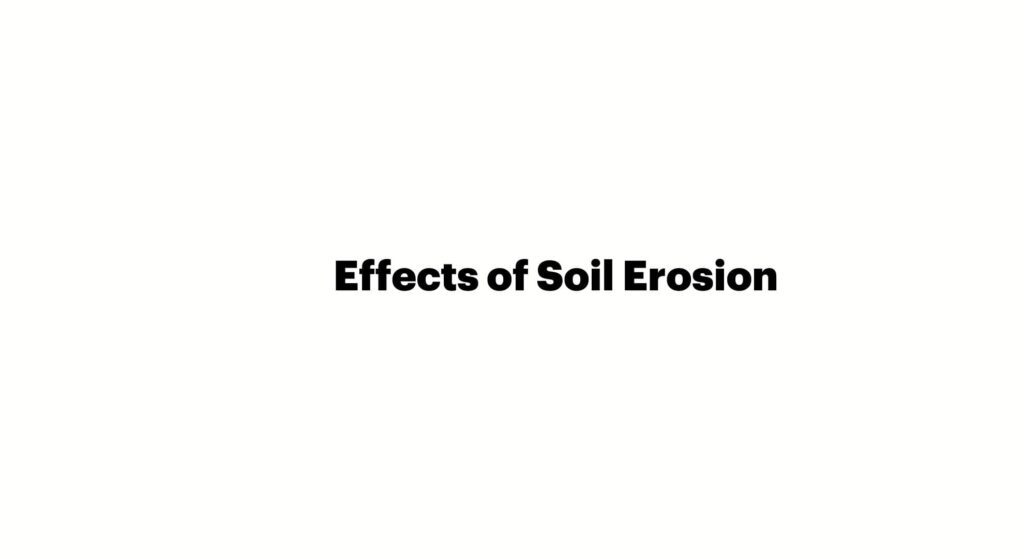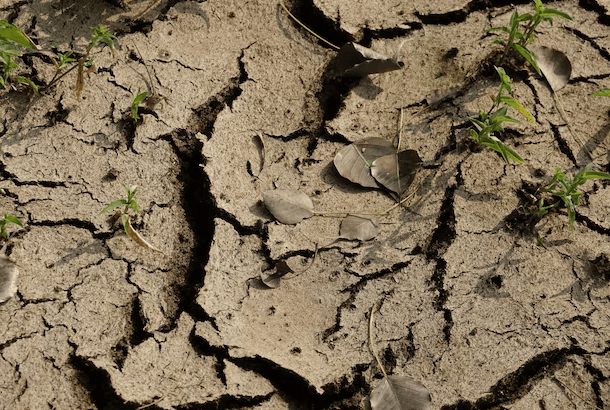Table of Content
Comprehensive Guide to Soil Erosion: Types, Causes, Effects, and Prevention Strategies
Soil erosion is a major environmental challenge that negatively impacts farming, wildlife, and the stability of ecosystems. This blog will explain the different types of soil erosion, what causes them, and the harmful effects they have on the environment and human life. We’ll also explore ways to prevent soil erosion from happening.
What is Soil Erosion?
Soil erosion is the process where soil is worn away and moved from one place to another by natural forces like water, wind, or ice. This movement can cause the soil to lose its nutrients and fertility, making it less suitable for farming and other uses. The balance between the formation of new soil and the rate of soil erosion is crucial. If erosion happens faster than soil can be formed, it leads to land degradation, meaning the land becomes less productive and harder to use.
Types of Soil Erosion
Soil erosion can occur in various ways, depending on how the soil is being displaced. Here are the main types of soil erosion:
- Splash Erosion
Splash erosion happens when raindrops hit the soil surface with enough force to dislodge soil particles. This is usually the first step in the erosion process and can create a crust on the soil surface, which prevents water from soaking into the ground. - Sheet Erosion
Sheet erosion occurs when a thin layer of soil is removed from a large area by water. This type of erosion often goes unnoticed because it doesn’t leave obvious marks, but it can result in the loss of the top layer of soil, which is the most fertile and important for plant growth. - Rill Erosion
Rill erosion is the formation of small channels, called rills, on the landscape as water flows over the soil. These rills can gradually deepen and widen, leading to more severe erosion. Over time, rill erosion can make land less suitable for farming and other activities. - Gully Erosion
Gully erosion is an advanced form of rill erosion, where small channels widen into deep gullies, drastically altering the landscape and making land restoration challenging. - Wind Erosion
Wind erosion occurs mainly in dry and barren areas where the soil is loose and not held together by vegetation. Strong winds can lift and carry away fine soil particles, leading to the loss of topsoil and creating challenges for farming.
Causes of Soil Erosion
Understanding what causes soil erosion is key to preventing it. The main causes include:
- Rainfall and Flooding
Heavy rain can cause soil erosion, especially when the soil is not protected by vegetation. Raindrops hitting the soil can break it apart, and water flowing over the surface can wash the soil away. - Agricultural Practices
Certain farming activities, like plowing and growing the same crops repeatedly, can disturb the soil and remove the plants that protect it. Without this cover, the soil is exposed to erosion, especially during heavy rains. - Deforestation
Cutting down trees for timber or to clear land for agriculture removes the roots that hold soil in place. Without these roots, the soil is more likely to be eroded by wind and water. - Overgrazing
When livestock graze too much in one area, they can remove the vegetation that protects the soil. The animals’ hooves can also compact the soil, making it more likely to erode. - Construction Activities
Building roads, houses, and other structures often involves removing vegetation and disturbing the soil. This can lead to increased erosion, as the soil is no longer protected by plants and is more vulnerable to being washed or blown away. - Wind
In dry and flat areas, wind can pick up loose soil particles and carry them away, especially if there isn’t much vegetation to hold the soil in place. This can lead to the formation of dust storms and the loss of valuable topsoil.
Effects of Soil Erosion

- Loss of Arable Land
Soil erosion removes the top layer of soil, which is rich in nutrients and essential for growing crops. As a result, agricultural land becomes less fertile, leading to lower crop yields and potentially causing food shortages. - Waterway Pollution
Eroded soil often contains pollutants like pesticides and fertilizers. When this soil is washed into rivers and lakes, it can degrade water quality and harm aquatic life. - Increased Flooding
Erosion can cause sediment to build up in rivers and streams, reducing their capacity to hold water. This can lead to more frequent and severe flooding, especially during heavy rains. - Biodiversity Loss
As soil erosion degrades the land, it can destroy habitats for plants and animals, leading to a loss of biodiversity. This can have far-reaching effects on ecosystems and the services they provide. - Infrastructure Damage
Soil erosion can weaken the foundations of roads, buildings, and other infrastructure, leading to costly repairs and maintenance.
Preventive Measures for Soil Erosion
To prevent soil erosion, a variety of strategies can be employed:
- Vegetative Cover
Planting trees, grasses, and other vegetation can help stabilize the soil and reduce the impact of raindrops and wind. This natural cover acts as a shield, protecting the soil from being washed or blown away. - Terracing
Terracing involves creating step-like structures on slopes to slow down water runoff and reduce erosion. This technique allows water to soak into the soil rather than washing it away, which helps preserve the soil and makes it more suitable for farming. - Contour Farming
Contour farming involves planting crops along the natural contours of the land rather than in straight lines. This method reduces water runoff and soil loss by following the shape of the landscape, which helps slow down the flow of water and encourages it to seep into the ground. - Mulching
Mulching involves layering the soil with organic materials like straw, leaves, or compost. - Erosion Control Structures
Installing barriers like silt fences, check dams, or retaining walls can help slow down water flow and capture sediment before it is washed away. These structures are particularly useful in areas with high erosion risk, such as construction sites or steep slopes.
Conclusion
Soil erosion is a serious environmental problem that affects agriculture and ecosystems around the world. By understanding the different types of soil erosion, their causes, and their effects, we can take action to prevent further damage. Implementing sustainable land management practices is essential to protecting our soil and ensuring that it remains a valuable resource for future generations.
FAQs on Soil Erosion
Rate of Soil Erosion Worldwide
Soil is being lost 10 to 40 times faster than it can be replenished in many areas globally. The average global soil erosion rate is about 17 tons per hectare per year, which is roughly 13-40 times higher than the sustainable rate of soil formation. The highest erosion rates are found in Asia, Africa, and South America.
Impact of Soil Erosion on Food Production
Soil erosion decreases soil fertility and reduces agricultural yields. It is estimated that erosion leads to a 10% loss in global crop production each year, posing a significant threat to global food security, particularly in developing countries where agriculture is vital to the economy.
Relationship Between Soil Erosion and Climate Change
Climate change is likely to worsen soil erosion due to increased rainfall intensity, more frequent extreme weather events, and changes in land use. Conversely, soil erosion contributes to climate change by releasing stored carbon into the atmosphere. Mitigating soil erosion is crucial for climate change prevention.


Leave a Reply